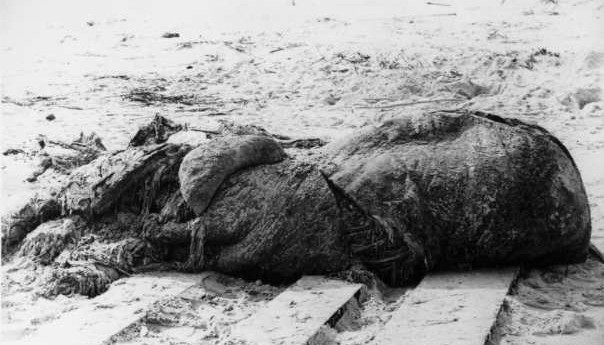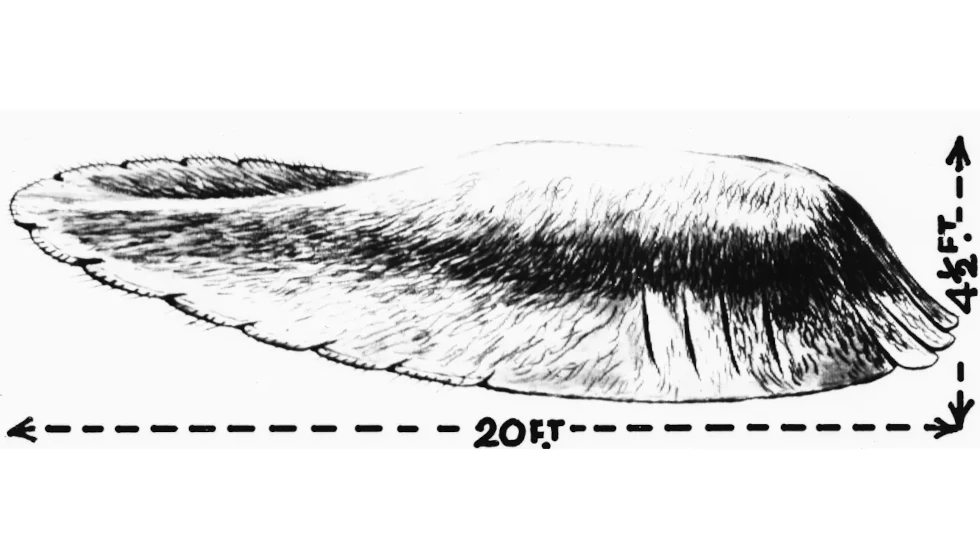Beware The Tasmanian Globster!!!
by Hobart Magazine

It came from the depths…
The ocean is a vast, mysterious place. It has captured humanity’s imagination for thousands of years, inspiring many myths and legends, from the sunken city of Atlantis to the biblical Leviathan. According to the United Nations Educational, Scientific and Cultural Organisation (UNESCO), only a mere 5% of the ocean has been explored. The rest is unknown. Who knows what bizarre creatures or startling formations remain undiscovered beneath the waves!
Sometimes, the mysteries of the deep reveal themselves. This happened on Tasmania’s wild west coast in August of 1960. This remote stretch of land is one of the loneliest places in the world. Aside from a few small towns, the rest is wilderness and wind-swept shores.
One winter morning, after a fierce storm, three local stockmen were tending to their cattle on a property along the Interview River. When their work was done, they went for a stroll on the beach. They found something unexpected and shocking.
The carcass of an enormous sea creature had washed ashore. It was 6 metres long, 5.5 metres wide, 1.4 metres high at its thickest, and weighed up to 10 tonnes. “By golly!” one of the men probably didn’t say. “A m…m…monster!”
Ben Fenton, one of the stockmen, later recalled, “I’ll never forget my first sight of it. It was sort of eerie. The monster lay on top of the beach. The whole body was exposed except for the underneath portion. There was no sign of blood. No eyes. No movement.”
The creature gave out an incredibly foul, eye-watering stench. It looked like a shapeless giant slug or tadpole, except ivory-coloured, with gill slits and without any eyes or defined head. Just a mound of flesh. The most unusual feature was its white bristles, resembling hair, like something out of a Lovecraftian nightmare.

And there it lay, on the beach, for two more years. Local authorities were not interested. West Coast people went back to minding their own business. It wasn’t until 1962 that word of the monster reached Hobart, and eventually, the media. After appearing in The Mercury, it made international news, and people from around the world sent in their theories about what it could be. One of the wilder theories thought it was a radioactive fish from Japan, another linked it to the mythological sea dragon.
First dubbed the West Coast Sea Monster, or the Tasmanian Sea Monster, it was British biologist Ivan T. Sanderson who coined the term “globster” to describe the creature. From that point onward, it became the Tasmanian Globster.
A research party was sent to investigate. It included CSIRO scientists, University of Tasmania zoologists and the director of the Tasmanian Museum and Art Gallery. When they arrived, the monster was still there, though it had further decomposed. Samples were cut off to be sent to laboratories and museums for testing. They also discovered it had no bones.
Bruce Mollison, a CSIRO scientist who led the research party, had his speculations. He said, “I think it might be a creature from an ocean depth never fathomed by man. It is possible that the creature was there long before it was recently discovered. It might have been completely buried at first and partly exposed when the sands moved.”
On 20 March 1962, the mystery was solved. After examination, scientists revealed that the Tasman Globster was most likely a mass of decaying whale blubber, which had probably fallen off a whaling ship. Far away from the wild theories that were thrown around by both scientists and the public. This revelation is consistent with future globsters.
Yes, there have been more! Including carcasses washed up before the 1960s that were retroactively identified as globsters. Today, a globster refers to any large unidentified organic mass that washes up on the shoreline of an ocean or other body of water. Most are eventually identified as decayed whale, shark, or giant squid remains. But who knows? Maybe one day a globster will wash ashore that defies identification. After all, 95% of the ocean remains unexplored. There might be something else lurking in the depths.

